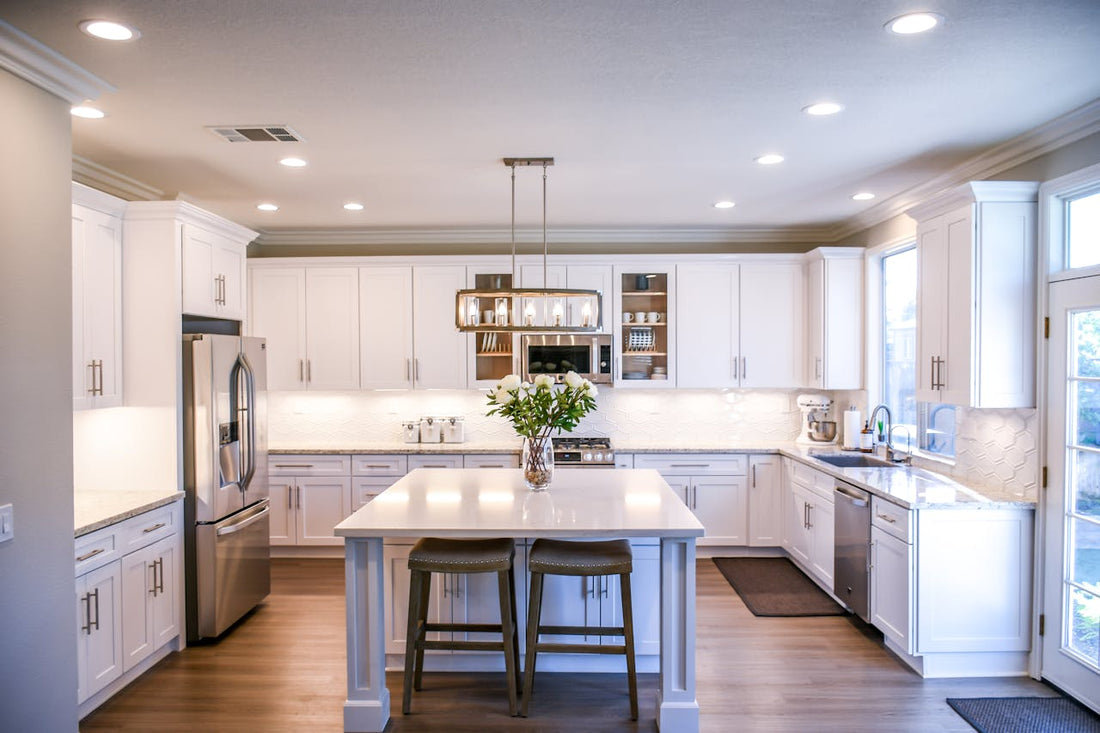Choosing flooring for the dining room extends past aesthetics, as it requires balancing surface resilience with the overall room design. Temperature, durability, and spill-resistance are important since dining rooms act as meeting areas for family and special meal occasions, as well as for managing spills. You require a sturdy flooring option that looks attractive and remains strong under frequent heavy usage.
What Type of Flooring is Best for a Dining Room?
Your eating area experiences frequent use, necessitating flooring choices that can withstand daily wear and tear. Conventional room solutions favor hardwood flooring as their preferred choice due to its unique characteristics that render it an unmatched option. A timeless dining room piece adds enduring appeal while offering warmth and visual interest to any eating area. The variety of wood choices such as oak, walnut, and hickory enables you to choose a quality that suits your style preferences. The lifespan of well-maintained solid wood spans decades, making it a worthwhile investment.
For families in search of cost-effective and easy-to-maintain flooring options, vinyl may be the perfect option. Vinyl flooring is now available in various designs such as wood, stone, or ceramic, and it will save you money either way. You can rely on vinyl's long-lasting nature and the simplicity of its upkeep, making it easy to manage spills and debris.
Opting for porcelain or ceramic tiles will enhance your preference for contemporary or industrial-style spaces. Vinyl is an exceptional option when liquid spills are likely, owing to its strong and moisture-resistant characteristics. The wide range of product options features styles that enhance various design themes, making them simple to coordinate with your dining area.
What Is the Best Flooring Under a Dining Table?
Dining table legs require a floor that maintains its structure despite heavy seating, frequent foot traffic, and occasional spills. Choose engineered wood due to its durability. This flooring offers a look similar to real wood and demonstrates superior performance in varying environmental situations. Your floor will retain its stability across the seasons, whether in hot summer heat or chilly winter nights.
You can select bamboo as your sustainable and eco-friendly option for enhancing the unique appearance of your area. Engineered hardwood will enhance your dining area as it withstands ongoing weight while providing a modern aesthetic.
For easy floor upkeep, vinyl flooring offers a sensible choice. The material stays durable and scratch-resistant, readily handling unexpected spills without issue. The extensive variety of finish choices guarantees you will find the perfect flooring that meets your dining table needs.
Is Laminate Flooring Good for Dining Rooms?
Laminate flooring caters to cost-aware individuals seeking contemporary aesthetics in their residences. This kind of flooring resists wear and tear, is easy to care for, and comes in various designs, ranging from real stone to wood-like patterns. The primary advantage of laminate is its affordable appeal. Laminate surfaces provide a high-end look that resembles natural wood patterns at a significantly lower cost than wood and stone materials.
Laminate options exhibit remarkable resilience against scratches while also showcasing protection against harm from dents and blemishes. Ranked second, laminate offers durability and easier maintenance as furniture arrangements frequently change. Laminate materials can be harmed by moisture, so homeowners should switch to vinyl or tile if they require surfaces that can withstand liquids.
What Is the Best Flooring for Kitchen Floors?
Your kitchen floor needs to function like dining room floors by withstanding heavy traffic and spills. Tile serves as a superb flooring choice for kitchens due to its availability in ceramic and porcelain varieties. Kitchen flooring shows significant resistance to moisture and features easy maintenance needs, along with extended durability. Kitchen tiles offer an endless variety of design choices that fit both traditional and contemporary interior styles.
Luxury vinyl tiles (LVT) are the ideal option when you require flooring that provides comfort underfoot. These flooring choices resemble real wood and stone but offer a more pleasantly soft texture that creates a laid-back environment. LVT tiles serve as waterproof surfaces, making them highly effective at stopping kitchen spills and mishaps.
Engineered wood works well in kitchens if appropriate sealing methods are applied to the material. The substance offers the same warmth and aesthetic as hardwood floors but shows better durability in damp environments. The additional benefit of this flooring is its ability to link your kitchen and dining areas seamlessly.
Finding the Right Flooring for Your Space
Choosing flooring for dining areas and other rooms in homes necessitates attention to both aesthetic alignment and practical usability. Opting for traditional hardwood or cost-effective vinyl flooring along with resilient tile showcases your approach to kitchen construction if you're seeking a flooring option that suits your lifestyle while enhancing the area. The right flooring selection will ensure your dining room retains its aesthetic appeal and functional qualities, providing both durability and style.





